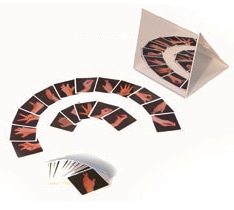One really cool aspect of using a software program like Recognise, is that you can keep tabs on whether or not patients actually do what we ask them to do. This is an important issue because any treatment that involves home exercises or training depends on people doing it! Historically, clinicians have used a training or home exercise diary to improve participation in. Do they work? Do patients just end up lying about it? How do we answer these questions? Well, this is what we tried to do here. This experiment involved patients who were participating in a graded motor imagery program for complex regional pain syndrome. The design was called a 2 x 2 design – patients were allocated to a diary or no diary (the first ‘2’) and to a ‘told about it or not told about it’ (the second ‘2’). Of course Recognise let’s us know exactly how much and how often people train. This is what the data told us:

- When patients keep a diary, they lie in it. I am not saying that the knowingly lie – just that they say they do it more than they really do – perhaps they just overestimate.
- However, they do actually do more training when they have a diary so it is probably a good thing to do.
- If we tell them that the software program records everything for us to check later, then they practice even more but, get this, they UNDERestimate how much they do.
What does it all mean? I reckon it means that if we have a method of automatically recording how often a patient practices/does exercises/perhaps takes their pill, we should both use it AND tell the patient we are using it. I reckon it also means that if we don’t have a method of automatically recording it, then we use a diary but accept that true participation will be a bit less than the diary suggests. Finally, we should lie to our patients and tell them we are recording it all when we are not. The final thing was a joke.
Do training diaries affect and reflect adherence to home programs
G. Lorimer Moseley
Oxford University, Oxford, United Kingdom, and The University of Sydney, Sydney, Australia
Introduction
Adherence is the degree to which patients and research participants act in accordance with the advice of their clinician or researcher. Adherence is an important issue in the practice of health care. Incomplete adherence is widely regarded as a substantial barrier to successful outcomes (i.e., exercises don’t work if you don’t do them). It has been proposed that 5.5% of hospital admissions (2 million per year in the US), and 1.7% of the national health care bill can be attributed to poor adherence. It is not surprising then, that numerous studies have investigated ways to increase adherence. Many studies examine adherence to medication regimen but adherence to exercise and home training programs, which form an important part of the management of many chronic conditions including cardiovascular disease and rheumatic disease, is equally important.
Adherence is also important in research practice. In addition to interfering with the completion of research studies, reducing statistical power, and inflating the cost of research studies, poor adherence undermines the very treatment under investigation, which increases the risk of erroneous conclusions and false rejection of effective treatments. Therefore for the researcher, equal attention must be given to maximizing and measuring adherence.
One common method to evaluate and promote adherence with home programs is a training diary. Despite their widespread clinical and research use, it is not known how the use of a training diary affects or reflects adherence. These issues form the basis of the current study, which hypothesized that patients overestimate adherence to a home program in their training diary; using a training diary increases adherence; and overt monitoring increases adherence.
See full article at Arthritis care & Research 55: 662-4
Moseley GL (2006). Do training diaries affect and reflect adherence to home programs? Arthritis and rheumatism, 55 (4), 662-4 PMID: 16874790


